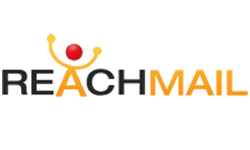In the ever-evolving realm of digital marketing, email stands tall as one of the most effective channels for reaching and engaging audiences. With the myriad of tools available, choosing the right one can feel like navigating a labyrinth. Among the contenders, eSputnik and ReachMail emerge as notable options, each offering unique features and capabilities. But which one is the right fit for your marketing needs? This exploration aims to unravel the strengths and distinctions between eSputnik and ReachMail, guiding you to make an informed decision that aligns with your marketing strategy.
| eSputnik | ReachMail |
|---|---|
 |  |
| G2 Score – 4.7 out of 5 stars | G2 Score – 4.0 out of 5 stars |
| TrustRadius Score – Nil | TrustRadius Score – 10.0 out of 10 |
Automation and Workflow Capabilities: Streamlining Your Email Marketing
In today’s fast-paced marketing environment, the ability to automate tasks and create efficient workflows is invaluable. Let’s compare how eSputnik and ReachMail stand in terms of automation, a crucial feature that can significantly impact your email marketing efficiency and effectiveness.
eSputnik: Mastering Complex Automation
eSputnik shines in the realm of automation, offering a robust platform designed to cater to marketers looking for comprehensive control over their email campaigns. With its advanced automation features, eSputnik allows users to create intricate workflows that can automate the entire customer journey, from initial engagement to post-purchase follow-ups.
The platform provides a visual workflow builder that enables you to design complex sequences based on subscriber actions, preferences, and data triggers. Whether it’s segmenting your audience based on their behavior, sending personalized birthday greetings, or triggering emails based on website interactions, eSputnik ensures that you can set up these automations with precision and ease.
ReachMail: Simplifying Email Automation
ReachMail takes a more streamlined approach to automation, focusing on simplicity and user-friendliness. While it may not offer the depth of automation capabilities found in eSputnik, ReachMail provides essential tools that enable businesses to automate their email campaigns effectively.
The platform offers easy-to-use automation options such as autoresponders and scheduled emails, making it straightforward for users to set up basic but impactful automated campaigns. This simplicity is particularly appealing for small businesses or marketers who are new to email automation and prefer a platform that gets the job done without a steep learning curve.
Choosing the Right Automation Tool for Your Needs
Deciding between eSputnik and ReachMail for automation depends on the complexity of your email marketing campaigns and the level of control you desire. If you’re looking to unleash the full potential of email automation with detailed, behavior-driven campaigns, eSputnik’s advanced capabilities will serve your needs well. Its comprehensive feature set is ideal for marketers who demand precision and flexibility in their automation strategies.
Conversely, if you’re after a tool that balances functionality with ease of use, offering straightforward automation features that can be quickly mastered, ReachMail might be the perfect fit. It’s suited for those who value simplicity and efficiency, enabling you to automate key aspects of your email marketing with minimal fuss.
Both eSputnik and ReachMail offer valuable automation features, but the best choice for you will ultimately align with your marketing goals, technical expertise, and the sophistication of your desired email campaigns.
Deliverability and Reputation Management: Ensuring Your Emails Are Seen
Email deliverability is a complex issue, influenced by factors such as sender reputation, content quality, and recipient engagement. Both eSputnik and ReachMail offer features and services designed to maximize deliverability rates, but their approaches and capabilities differ.
eSputnik: Advanced Deliverability Features
eSputnik places a strong emphasis on deliverability, employing sophisticated technologies and best practices to ensure high inbox placement rates. The platform offers a comprehensive set of tools for managing sender reputation, including dedicated IP addresses for high-volume senders, SPF and DKIM records to authenticate emails, and feedback loop setup with major ISPs to monitor and reduce complaint rates.
Moreover, eSputnik provides advanced analytics and reporting features that allow you to track deliverability metrics in real-time, identifying potential issues before they impact your campaigns. The platform’s proactive approach to managing deliverability includes personalized consultations and recommendations to improve inbox placement based on your specific email practices.
ReachMail: Simplifying Deliverability Management
ReachMail approaches deliverability with a focus on simplicity and ease of use, offering key features to help businesses maintain good sender reputations without the need for extensive technical knowledge. The platform ensures that all emails are automatically authenticated with SPF and DKIM, reducing the likelihood of being marked as spam.
ReachMail also offers tools for managing email lists effectively, including automatic removal of hard bounces and unsubscribes, which helps maintain a healthy sender reputation. Additionally, the platform provides basic reporting on deliverability metrics, giving users a snapshot of their email performance and the ability to adjust strategies accordingly.
Choosing the Right Tool for Deliverability Success
The decision between eSputnik and ReachMail in terms of deliverability and reputation management will depend on your specific needs and the level of control you desire over these aspects of your email marketing. If you require advanced deliverability features, detailed analytics, and personalized guidance to navigate the complexities of inbox placement, eSputnik’s robust offering may be more suited to your needs. Its comprehensive approach is ideal for businesses that prioritize deliverability and are willing to invest in the resources needed to manage it effectively.
On the other hand, if you’re looking for a platform that simplifies deliverability management with essential features and automated processes, ReachMail could be the better choice. Its user-friendly approach is particularly appealing for small businesses or those new to email marketing, offering a straightforward way to maintain good sender reputation and ensure emails reach their intended recipients.
Both eSputnik and ReachMail recognize the importance of deliverability in the success of email marketing campaigns, but the best choice for you will ultimately depend on the complexity of your needs and how much control you wish to have over deliverability and reputation management.
Pricing Structure and Value Proposition: Maximizing Your Email Marketing Investment
The cost associated with email marketing tools is a critical factor for most businesses, from startups to large enterprises. It’s not just about the price but also about what you get for your money—features, scalability, support, and ultimately, the impact on your marketing goals.
| eSputnik | eSputnik operates on a pay-as-you-go model, where you pay for the number of emails sent. Email Marketing: Charges per email sent, starting at around $1.5 per 1,000 emails. SMS Marketing: Charges per SMS sent, with prices varying based on the country. Viber Messaging: Also offers Viber messaging services, with prices depending on the volume. The platform also provides advanced features like automation, segmentation, and personalization, with prices varying based on usage. |
| ReachMail | Pricing is based on the volume of emails sent per month: Plans start from around $10 per month for up to 7,500 emails, with various tiers up to over $70 per month for higher volumes. Features include list management, detailed reporting, and advanced segmentation. Custom enterprise solutions are also available, which include additional features and dedicated support. |
eSputnik: Flexible Pricing for Scalable Needs
eSputnik’s pricing model is designed to accommodate businesses at various stages of growth. It typically offers a tiered pricing strategy, where the cost escalates based on the volume of emails sent and the number of contacts in your database. This model allows small businesses to start with a basic, more affordable plan, while providing the option to scale up as their needs grow.
One of eSputnik’s strengths is its focus on delivering advanced features even at lower-tier levels, ensuring that businesses of all sizes have access to powerful email marketing tools. Additionally, eSputnik may offer custom pricing plans for very large enterprises or businesses with specific requirements, emphasizing its commitment to flexibility and scalability.
ReachMail: Cost-Effective Solutions for Every Marketer
ReachMail aims to provide a straightforward and transparent pricing model, offering plans that cater to a wide range of business sizes and marketing budgets. The platform often features a free plan with basic functionalities, ideal for small businesses or startups just beginning their email marketing journey.
Paid plans are usually structured around the volume of emails and the level of access to advanced features, such as automation, segmentation, and analytics. ReachMail’s value proposition lies in its ability to offer competitive pricing while still providing a robust set of tools that businesses need to execute effective email marketing campaigns.
Assessing Value Beyond the Price Tag
When comparing eSputnik and ReachMail based on their pricing and value proposition, it’s essential to consider how each platform’s offerings align with your business’s specific needs and goals. If your organization requires a highly customizable solution with advanced automation and segmentation capabilities, eSputnik’s scalable pricing model may offer the flexibility and depth you need, albeit potentially at a higher cost.
Conversely, if you’re seeking an affordable and straightforward solution that covers the basics of email marketing with an easy-to-understand pricing structure, ReachMail might be the more attractive option. Its focus on providing essential tools at competitive prices makes it a strong contender for businesses looking to maximize their email marketing investment without overspending.
Ultimately, the decision between eSputnik and ReachMail should be based not just on the immediate cost but also on the potential ROI each platform can deliver. Evaluating each tool’s pricing structure in the context of your marketing objectives, desired features, and long-term scalability will help you choose the platform that offers the best value for your business.

Related: Check out our free SEO suite

Integration and Extensibility: Connecting Your Marketing Ecosystem
A well-integrated marketing tool can automate processes, enhance customer insights, and provide a more cohesive user experience. Let’s compare the integration capabilities of eSputnik and ReachMail to see which platform might better suit the needs of a connected marketing ecosystem.
eSputnik: Comprehensive Integration for a Unified Strategy
eSputnik is designed with the understanding that email marketing rarely operates in isolation. It offers robust integration options with a wide array of external platforms and services. This includes direct integrations with popular e-commerce platforms like Magento, Shopify, and WooCommerce, allowing for the automation of transactional emails and personalized marketing campaigns based on user behavior and purchase history.
Additionally, eSputnik provides API access for custom integrations, giving businesses the flexibility to connect virtually any tool or system they use. This level of integration capability is especially beneficial for businesses that rely on a complex stack of marketing and sales tools and need their email marketing efforts to be deeply integrated with the rest of their operations.
ReachMail: Streamlined Integrations for Simplicity and Ease
ReachMail focuses on providing a straightforward and user-friendly email marketing solution, and this extends to its approach to integrations. It offers a selection of key integrations with major platforms and services that are essential for email marketing, such as social media tools and analytics services, ensuring that users can easily connect ReachMail with other aspects of their digital marketing strategy.
While ReachMail may not offer the same breadth of integration as eSputnik, it prioritizes ease of use and simplicity, making it a good choice for smaller businesses or those with less complex needs. For many users, the ability to quickly and easily set up essential integrations without the need for custom development is a significant advantage.
Choosing the Right Tool for Integration Needs
When deciding between eSputnik and ReachMail based on integration capabilities, consider the complexity of your marketing tech stack and how important deep, customizable integrations are to your strategy. If your business operates with a rich ecosystem of interconnected tools and platforms, and you require a high degree of customization, eSputnik’s extensive integration options and API access provide the flexibility and depth needed to create a seamless marketing workflow.
On the other hand, if you prefer a more streamlined approach with a focus on ease of use and straightforward integrations with key platforms, ReachMail offers a more accessible solution. Its integration capabilities, while not as extensive, cover the essentials for effective email marketing and are designed to be user-friendly.
Both eSputnik and ReachMail acknowledge the importance of integrating with the broader marketing ecosystem, but the right choice for your business will depend on the level of integration complexity required and the resources you have available for managing those integrations.
Analytics and Reporting: Measuring Success and Optimizing Performance
Effective analytics and reporting tools offer insights into various metrics such as open rates, click-through rates, conversion rates, and more, helping marketers to gauge the effectiveness of their campaigns and refine their strategies over time. Here’s how eSputnik and ReachMail approach analytics and reporting.
eSputnik: Comprehensive Analytics for Data-Driven Marketers
eSputnik provides a robust analytics suite designed to give marketers a deep dive into their campaign performance. The platform offers detailed reports on a wide range of metrics, enabling users to track everything from basic email engagement statistics to more complex behaviors like conversion tracking and journey mapping.
One of the strengths of eSputnik’s analytics is the ability to segment data and create custom reports. This allows marketers to analyze performance based on specific criteria, such as subscriber segments or campaign types, providing actionable insights that can inform more targeted and effective marketing strategies. Additionally, eSputnik supports real-time analytics, giving users up-to-the-minute data on their campaigns’ performance.
ReachMail: Streamlined Reporting for Efficient Analysis
ReachMail emphasizes simplicity and efficiency in its approach to analytics and reporting. The platform offers a straightforward dashboard that presents key metrics at a glance, making it easy for marketers to get a quick overview of their campaign performance without wading through complex data sets.
While ReachMail may not offer the same depth of analytics as eSputnik, it provides all the essential reporting features that small to medium-sized businesses need to track their email marketing efforts effectively. This includes basic metrics like open and click rates, as well as more detailed reports on subscriber behavior and engagement trends over time. ReachMail also offers tools for A/B testing, allowing marketers to directly measure the impact of different campaign elements on their overall performance.
Choosing the Right Tool for Your Analytics Needs
When deciding between eSputnik and ReachMail based on analytics and reporting capabilities, it’s important to consider the complexity of the data you need to analyze and how you prefer to interact with analytics tools. If your marketing strategy relies on deep data analysis and you value the ability to customize reports and segment data in sophisticated ways, eSputnik’s comprehensive analytics suite is likely a better fit. Its extensive reporting capabilities are suited for marketers who need detailed insights to drive their decision-making process.
Conversely, if you’re looking for a more straightforward approach to analytics that provides clear, actionable insights without requiring a deep dive into data, ReachMail’s streamlined reporting might be more your speed. Its focus on efficiency and simplicity makes it ideal for businesses that want quick access to essential metrics and an easy way to measure the success of their campaigns.
Both eSputnik and ReachMail offer valuable tools for tracking and analyzing your email marketing performance, but the best choice for you will depend on your specific analytics needs and how you plan to use data to inform your marketing strategies.
User Experience and Ease of Use: Navigating the Platforms
A smooth user experience and easy navigation can significantly reduce the learning curve and make email marketing more accessible, especially for teams with limited technical expertise or resources.
eSputnik: Advanced Features with a Learning Curve
eSputnik offers a comprehensive suite of email marketing tools designed to cater to marketers looking for depth and granularity in their campaigns. With its advanced features comes a more complex interface that might present a steeper learning curve for new users or small teams without dedicated marketing tech support. However, for those willing to invest the time, eSputnik’s dashboard provides powerful customization and segmentation capabilities, enabling detailed campaign management.
The platform aims to balance its advanced features with helpful guides and support materials designed to improve the user experience. For marketers focused on crafting highly targeted, data-driven campaigns, the initial investment in learning how to navigate eSputnik’s interface can pay off with greater control over their marketing strategies.
ReachMail: Streamlined Interface for Quick Campaign Deployment
ReachMail prioritizes simplicity and ease of use, making it an attractive option for small businesses or marketers who prefer a more straightforward approach. Its interface is designed with clarity in mind, allowing users to quickly find the features they need without navigating through complex menus. This focus on usability extends to ReachMail’s campaign creation tools, which simplify the process of designing, segmenting, and sending emails.
For businesses that need to get their email campaigns up and running quickly, without the need for extensive customization, ReachMail’s user-friendly approach can save time and reduce the need for specialized training. The platform also offers accessible customer support to assist users in maximizing the tool’s capabilities, further enhancing the user experience.
Selecting the Right Platform for Your Team
The choice between eSputnik and ReachMail in terms of user experience and ease of use ultimately depends on your team’s needs, technical expertise, and the complexity of your email marketing campaigns. If you require a platform that offers advanced targeting and segmentation capabilities and are prepared to navigate a more complex interface, eSputnik provides the tools necessary to execute sophisticated marketing strategies. Its comprehensive feature set is well-suited for teams that prioritize depth and customization in their email marketing efforts.
Conversely, if you value simplicity and quick campaign setup, ReachMail offers an intuitive platform that allows you to efficiently manage your email marketing without a steep learning curve. Its user-friendly design and straightforward functionality make it ideal for small businesses or marketers who need to focus more on content and less on technical setup.
Both eSputnik and ReachMail have their merits, with each platform catering to different types of users. Assessing your team’s capacity for onboarding a new tool and your long-term marketing goals will help you choose the platform that best aligns with your operational style and campaign objectives.
Conclusion
Deciding between eSputnik and ReachMail boils down to your specific email marketing needs, technical expertise, and the level of sophistication required for your campaigns. eSputnik, with its comprehensive suite of advanced features, caters to marketers seeking in-depth customization and data-driven targeting, albeit with a steeper learning curve. Its robust analytics, complex automation capabilities, and extensive integration options make it ideal for larger businesses or those with dedicated marketing teams ready to dive deep into their email strategies.
On the flip side, ReachMail offers a more streamlined, user-friendly experience, emphasizing ease of use and efficiency in campaign management. Its intuitive interface and straightforward functionalities are perfect for small businesses or individuals who prioritize quick setup and simplicity over complex customization. Ultimately, whether you lean towards the rich feature set of eSputnik or the accessible, efficient approach of ReachMail, the right choice should align with your marketing objectives, resource availability, and how you plan to engage with your audience through email.
Read Next
- ConvertKit vs VerticalResponse: The Best Email Marketing Tool for 2024
- ConvertKit vs iContact: The Best Email Marketing Tool for 2024
- ConvertKit vs Zoho Campaigns: The Best Email Marketing Tool for 2024
- ConvertKit vs Drip: The Best Email Marketing Tool for 2024
- ConvertKit vs Pabbly Email Marketing: The Best Email Marketing Tool for 2024





















